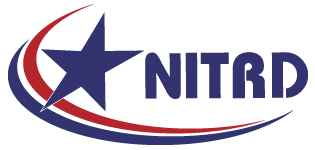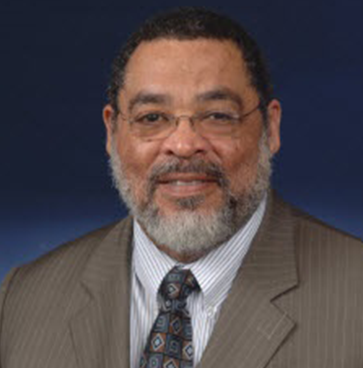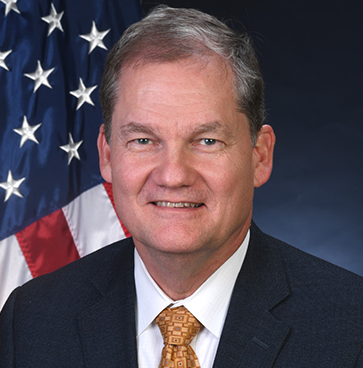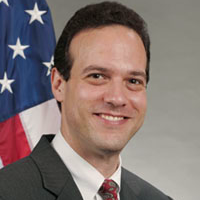ABOUT THE NITRD PROGRAM
The Networking and Information Technology Research and Development (NITRD) Program is the Nation’s primary source of federally funded research and development (R&D) in advanced information technologies (IT) in computing, networking, and software. NITRD is among the oldest and largest of formal Federal programs that coordinate the activities of multiple agencies to tackle multidisciplinary, multitechnology, and multisector R&D needs. The 22 NITRD member agencies now invest approximately $10.9 billion annually in R&D programs that identify, develop, and transition to practical use the advanced networking and IT capabilities needed by the Federal Government and the Nation.
Advanced networking and IT capabilities underpin U.S. technological leadership in the world, as well as American military superiority, national security, economic prosperity, energy dominance, health, innovation, maintenance of a cutting-edge IT research infrastructure, and expansion of the skilled cyber-enabled workforce. NITRD’s interagency communication and collaboration in IT R&D leverage agency strengths, help avoid duplication, and foster development of interoperable systems, thus improving the cost-effectiveness of Federal research investments. The NITRD collaboration framework also supports individual and joint agency outreach to academia and industry to foster alliances and strengthen the national innovation ecosystem.
NITRD COORDINATION AND COLLABORATION WITH NSTC S&T COMMITTEES
NITRD’s interdisciplinary and nationally focused R&D agenda creates natural synergies of its IWG efforts with other efforts of the NSTC enterprise, including those of the Committees and Subcommittees listed below:
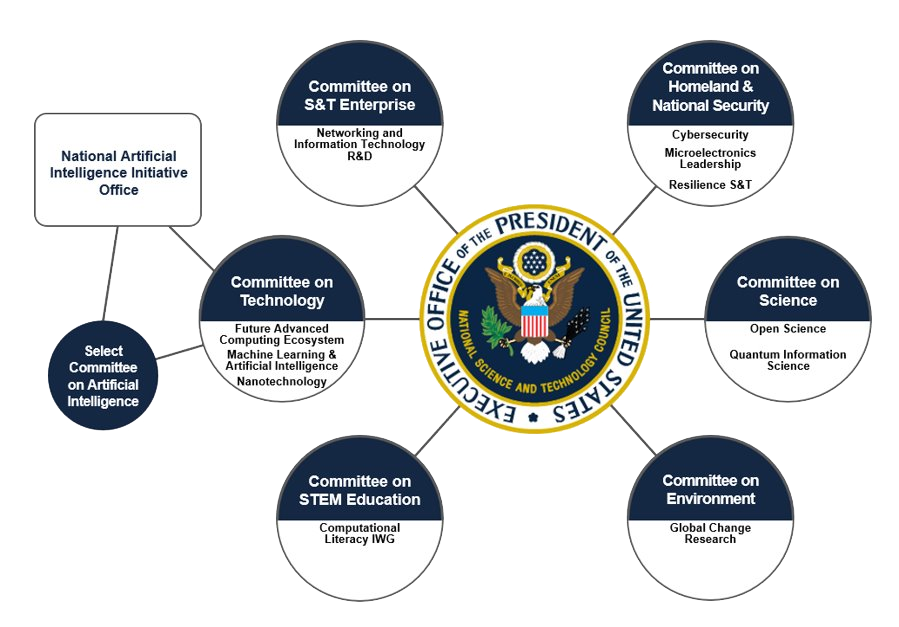
- Committee on Environment
- Subcommittee on Global Change Research
- Committee on Homeland and National Security
- Special Cybersecurity Operations Research and Engineering Subcommittee
- Subcommittee on Microelectronics Leadership
- Subcommittee on Resilience S&T
- Committee on Science
- Subcommittee on Quantum Information Science
- Subcommittee on Open Science
- Committee on STEM Education
- Federal Coordination in STEM Education Subcommittee
- Computational Literacy Interagency Working Group
- Committee on Technology
- Future Advanced Computing Ecosystem (FACE) Subcommittee
- Machine Learning and Artificial Intelligence (MLAI) Subcommittee
- Nanoscale Science, Engineering, and Technology Subcommittee
- Committee on S&T Enterprise
- Subcommittee on Networking and Information Technology R&D
- Select Committee on Artificial Intelligence
ORGANIZATION
The NITRD Program is managed by the Subcommittee on Networking and Information Technology Research and Development (NITRD Subcommittee) of the National Science and Technology Council (NSTC) Committee on Science and Technology Enterprise (CSTE) and operates under the aegis of the Office of Science and Technology Policy (OSTP).
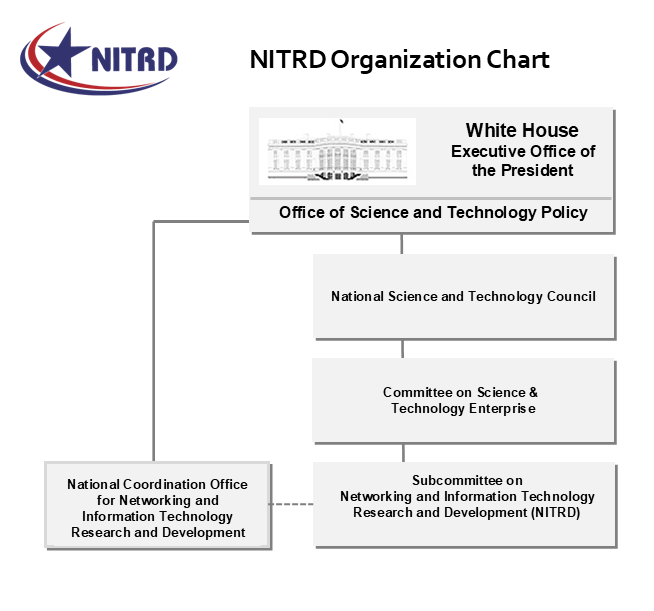
The Office of Science and Technology Policy (OSTP) was established by the National Science and Technology Policy, Organization, and Priorities Act of 1976 (Public Law 94-282) to provide the President and others within the Executive Office of the President with advice on the scientific, engineering, and technological aspects of the economy, national security, homeland security, health, foreign relations, the environment, and the technological recovery and use of resources, among other topics. OSTP leads interagency science and technology policy coordination efforts, assists the Office of Management and Budget with an annual review and analysis of Federal research and development in budgets, and serves as a source of scientific and technological analysis and judgment for the President with respect to major policies, plans, and programs of the Federal Government. More information is available at https://www.whitehouse.gov/ostp/.
The National Science and Technology Council (NSTC) is the principal means by which the Executive Branch coordinates science and technology policy across the diverse entities that make up the Federal research and development enterprise. A primary objective of the NSTC is to ensure science and technology policy decisions and programs are consistent with the President’s stated goals. The NSTC prepares research and development strategies that are coordinated across Federal agencies aimed at accomplishing multiple national goals. The work of the NSTC is organized under committees that oversee subcommittees and working groups focused on different aspects of science and technology. More information is available at https://www.whitehouse.gov/ostp/ostps-teams/nstc/.
The NITRD Subcommittee comprises senior representatives of the 22 Federal member agencies and departments that invest in IT-related R&D programs, as well as representatives of OSTP and the Office of Management and Budget (OMB). The Subcommittee interacts routinely with Congress, OMB, OSTP, and the Federal agencies with budgets and interests in IT R&D. It meets in person three times a year, and online as needed, to plan, review, and coordinate NITRD policies, programs, and activities. The NITRD Subcommittee is co-chaired by the Director of the NITRD NCO and an OSTP-designated representative from among the NITRD member agencies (NITRD Subcommittee and Group Co-Chairs). Each NITRD Subcommittee member agency identifies a primary representative and an alternate to the NITRD Subcommittee. (NITRD Subcommittee Representatives and Alternates).
HPCC/NITRD PROGRAM AUTHORIZING LEGISLATION
The Networking and Information Technology Research and Development (NITRD) Program (formerly known as High Performance Computing and Communications (HPCC) Program) was created by the High Performance Computing Act of 1991, (P.L. 102-194) and amended by the Next Generation Internet Research Act of 1998 (P.L. 105-305), and the America COMPETES (Creating Opportunities to Meaningfully Promote Excellence in Technology, Education, and Science) Act of 2007 (P.L. 110-69). NITRD was reauthorized by Congress in the American Innovation and Competitiveness Act of 2017 (P.L. 114-329).
Learn more »
PCAST
The NITRD authorizing language mandates a periodic review of the program’s activities, progress, and direction. The reviews are performed by a working group consisting of members of the President’s Council of Advisors for Science and Technology (PCAST) and outside experts from the fields covered by the NITRD program, as needed. The working group and PCAST often consult with government agencies, leading academic and national laboratory experts, industry leaders, and other stakeholders to assess the state of research and development in IT fields, the preparation of the future IT workforce, and the coordination of IT activities. The working group also assesses the operation and effectiveness of the coordination activities carried out by the NITRD Subcommittee. PCAST Reports on NITRD:
- Networking and Information Technology Research and Development Program Review, PCAST Report, January 11, 2021.
- Ensuring Leadership in Federally Funded Research and Development in Information Technology, PCAST Report, August 11, 2015.
- Designing a Digital Future: Federally Funded Research and Development in Networking and Information Technology, PCAST Report, January 17, 2013.
- Designing a Digital Future: Federally Funded Research and Development in Networking and Information Technology, PCAST Report, December 16, 2010.
MEMBER AGENCIES
The following Federal departments and agencies conduct or support R&D in advanced networking and information technologies, report IT research budgets in the NITRD budget crosscut, and provide support for NITRD Program coordination:
Representatives of over 50 other Federal departments and agencies participate in NITRD activities and have mission interests in advanced networking and IT R&D and applications; they support NITRD Program coordination but do not participate in the NITRD Subcommittee.
NITRD PROGRAM BUDGET REPORTING
NITRD PROGRAM SUPPLEMENT TO THE PRESIDENT’S BUDGET
The annual NITRD Program Supplement to the President’s Budget provides a technical summary of NITRD research investments and activities planned and coordinated through the NITRD Program in a given Federal budget cycle, as required by the High-Performance Computing Act of 1991 (P.L. 102-194) and reauthorized by Congress in the American Innovation and Competitiveness Act of 2017 (P.L. 114-329). The budget reporting and technical program summaries are organized by NITRD Program Component Areas (PCAs). The Supplement provides NITRD members’ budget reporting for the most recently completed budget cycle, the current budget cycle, and the budget requests for the next fiscal year. Budget information for the entire span of the NITRD Program, mirroring that reported in the annual Supplements, is captured in visual and interactive forms in the NITRD Dashboard.
PROGRAM COMPONENT AREAS (PCAs)
The NITRD PCAs are major subject areas for Federal IT R&D. PCAs are intended to facilitate budgetary comparisons from year to year in each area. The PCA set evolves over time, reflecting changes in IT R&D activities at Federal agencies and IT R&D priorities of the Administration. NITRD’s FY2024 PCAs are:
INTERAGENCY WORKING GROUPS
The NITRD technical coordination efforts are focused in its Interagency Working Groups (IWGs) where member- and participating-agency representatives exchange information and collaborate on research plans and activities such as testbeds, workshops, and cooperative solicitations. Such activities enable agencies to coordinate and focus their R&D resources on important, shared problems with the common goals of making new discoveries, developing new technological solutions, and transitioning those to practical use. Additional benefits accrue from cultivating a vibrant scientific and intellectual enterprise in which researchers across various agencies, disciplines, and sectors share ideas and results, speeding the overall pace of innovation. The NITRD IWGs are:
|
For each annual NITRD Supplement, agencies “map” their NITRD Program activities, coordinated by Interagency Working Groups (IWGs), into Supplement sections and budgets organized by PCAs.

NITRD NATIONAL COORDINATION OFFICE (NCO)
The NITRD National Coordination Office (NCO) provides day-to-day support to the NITRD Program, the NITRD Subcommittee, and its IWGs by providing technical staff expertise, planning, coordination, point of contact, physical and virtual meeting venues, and administrative assistance for Program activities. The NCO continuously seeks to enhance its ability to be a catalyst for collaboration, exchange of information, and outreach to foster knowledge, methods, R&D, technology transfer, and innovation for U.S. global leadership in networking and information technology and their applications. The budget for the NCO is set by the NITRD Subcommittee.
Key NCO Activities on behalf of the NITRD Program and in cooperation with its oversight and participating bodies are as follows:
- Prepare and disseminate the NITRD Supplements to the President’s Budget, which provides annual budgetary and program summaries for agency research activities planned and coordinated through NITRD, as required by law.
- Prepare and disseminate other NITRD documents and resources, such as multiagency strategic plans, workshop reports, recommendations on specific R&D topics, and Federal agency resource guides in specific areas of interest to the Nation’s IT community.
- Maintain the NITRD website, including its electronic publications library, news updates about current NITRD activities, and the Federal IT resource guides and inventories.
- Support external reviews by the President’s Council of Advisors on Science and Technology (PCAST) of the NITRD Program, transmit the results of these evaluations to Congress, and undertake to effect positive changes in the Program in response to the reviews.
- Hold public meetings and provide expert presentations on IT topics, as appropriate.
HISTORY OF NITRD FUNDING
| In its first annual report to the Congress, NITRD – then the HPCC Program – reported an estimated FY1991 multiagency budget of $489.4 million and a proposed FY1992 budget of $638.3 million. Eight Federal agencies were represented in that budget: DARPA, DOE, EPA, NASA, NIH, NIST, NOAA, and NSF.
Since 1991, the NITRD program has evolved to address the dramatic expansion in information technologies, applications, and Government needs by adjusting the R&D focus to address emerging areas of interest. Today, there are 22 agency members of the NITRD Program, which now encompasses more than $10.9B in Federal IT R&D reported in FY2024 Budget Request. Additional information on NITRD-related R&D expenditures may be found at the NITRD dashboard website.
|
DIRECTORS
LINKS/REFERENCES
- M-23-20 Multi-Agency Research and Development Priorities for the FY 2025 Budget, August 2023
- Charter of the National Science and Technology Council
- NITRD Program: Written Deliverables Specified in its Governing Legislation, National Coordination Office for the NITRD Program, 03/12/2021
- NITRD and NAIIO Supplement to the President’s FY2024 Budget, November 16, 2023
- Federal IT resource guides and inventories (inventories, information portals, resource guides)
- NITRD Testimony (Testimony Hearings before the House and Senate Committees, 1998-present)
- NITRD Organization Chart
- History of HPCC and NITRD from the 1980s to 1992, 1992 to 1995, and 1996 to 2015.
- Historical Documents (publications and reports, correspondence, meeting materials and minutes)
- NITRD NCO Directors
- Membership in the NITRD Program
- NITRD 30th Anniversary Symposium, May 25, 2022
- NITRD Program 30th Anniversary Commemoration, December 2, 2021
- NITRD 20th Anniversary Symposium, February 16, 2012
Page updated: May 1, 2024

